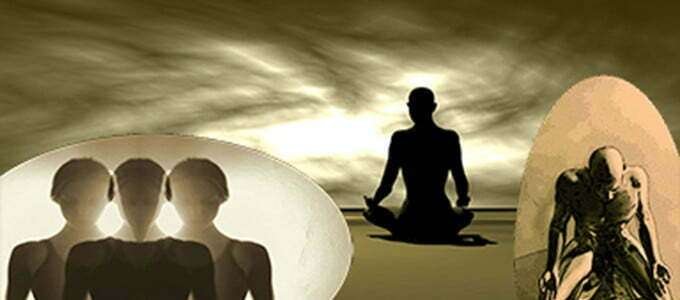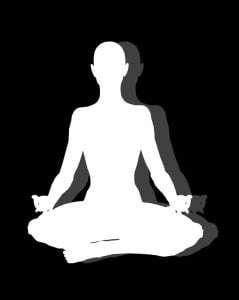Origin of the English Word Meditation
‘Meditation’ – derived from the Latin meditatio, from a verb meditari, meaning “to think, contemplate, devise, ponder”.
Interesting that the word’s English origins point toward more engaged mental activity than I tend to associate with meditation. To me, even contemplation involves less active thinking and more pondering or a daydreaming (floating thoughts) quality. I’ve never been interested in meditation for stress relief or feeling better about myself or life. For me, meditation is about allowing what is more subtle and real to rise more to the foreground of experience – to the point where the meditator and the meditating are one.
In the Old Testament, hagâ means to sigh or murmur, and also, to meditate. When the Hebrew Bible was translated into Greek, hagâ became the Greek melete. The Latin Bible then translated hagâ/melete into meditatio. The use of the term meditatio as part of a formal, stepwise process of meditation goes back to the 12th-century monk Guigo II.
Sighing and murmuring link meditation to the breath and chanting or mantras in my thinking.
The Tibetan word for meditation “Gom” means “to become familiar with” and has the strong implication of training the mind to be familiar with states that are beneficial: concentration, compassion, correct understanding, patience, humility, perseverance, etc.
For me, ‘to become familiar with,’ points to absorption and the nondual – knowing by being.
‘Meditation’ was introduced as a translation for Eastern spiritual practices, referred to as dhyana in Buddhism and in Hinduism.
Dhyan is a state of pure consciousness, which transcends the inner and outer senses. The climax of Dhyan is samadhi. In Indian tradition, it is used for inner soul growth. Western psychologists link it with mental concentra-tion and consider it a special state of mind. But this is only the early phase of Dhyan.
The term ’Dhyan’ comes from ’dhyai’ dhatu used in ’lat’ pratyaya. Its meaning is contemplation or the natural tendency and direction of senses. Patanjal Yogashastra links it with ekagrata or concentration. According to Sri Aurobindo, Dhyan is that state in which the inner mind tries to see the reality behind things. Ekagrata means focusing the consciousness on one point or object and keeping it steady in one state. In yoga, ekagrata is achieved when the mind is deeply engrossed in a special condition like quietude, or action or aspiration or resolve. This is called meditation. Read more»
History of Meditation
Some of the earliest references to meditation are found in the Hindu Vedas (1500 BCE). Around the 6th to 5th centuries BCE, other forms of meditation developed in Taoist China and Buddhist India.
In the west, by 20 BCE Philo of Alexandria had written on some form of “spiritual exercises” involving attention (prosoche) and concentration and by the 3rd century Plotinus had developed meditative techniques.
Philo’s primary importance is in the development of the philosophical and theological foundations of Christianity.
Plotinus developed a complex spiritual cosmology involving three elements: the One, the Intelligence, and the Soul. It is from the productive unity of these three Beings that all existence emanates, according to Plotinus.
The Pali Canon, which dates to 1st century BCE considers Indian Buddhist meditation as a step towards salvation. The Vimalakirti Sutra which dates to 100 CE included a number of passages on meditation. Around 1227, D?gen wrote the instructions for Zazen.
In his “Universally Recommended Practices for Zazen” Fukanzazengi he says, “The zazen I speak of is not meditation practice [in the traditional Buddhist sense]. It is simply the Dharma gate of peace and bliss, the practice-realization of totally culminated awakening.” Dogen’s zazen is a ritual expression and celebration of awakening already present. He repeatedly emphasizes the oneness of practice-realization, in which practice does not lead through one’s own efforts to some subsequent realization. For example, in 1241 he said, “Know that buddhas in the buddha way do not wait for awakening.” Read more»
The Islamic practice of Dhikr had involved the repetition of the 99 Names of God since the 8th or 9th century. Between the 10th and 14th centuries, hesychasm was developed, particularly on Mount Athos in Greece, and involves the repetition of the Jesus prayer. Christian meditation progressed from the 6th century practice of Bible reading among Benedictine monks called Lectio Divina, i.e. divine reading. Its four formal steps as a “ladder” were defined by the monk Guigo II in the 12th century with the Latin terms lectio, meditatio, oratio, and contemplatio (i.e. read, ponder, pray, contemplate).
Secular forms of meditation started appearing in India in the 1950s and migrated to the United States in the 1960s.
Reading about the etymology and history of ‘meditation’ gives me some insight into how the meaning of a word evolves through time and cultures, but also how the mind reifies concepts. It’s also interesting to note, my opinion, that as meditation became more secular, it seems to have lost much of its spiritual, transcendent and transformational power. A daily sitting practice can be one of the simplest, yet challenging forms of meditation.
Simply sitting and meditating is not necessarily practice. Practice requires true intention, true motivation, true devotion to the truth. Otherwise, we are not practicing or engaging the work. A. H. Almaas – Runaway Realization










